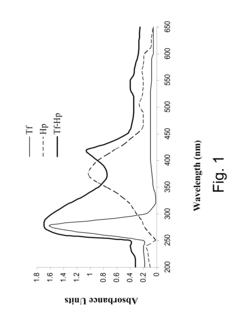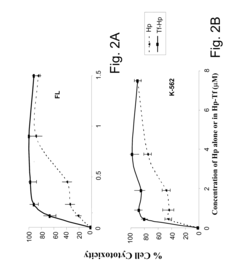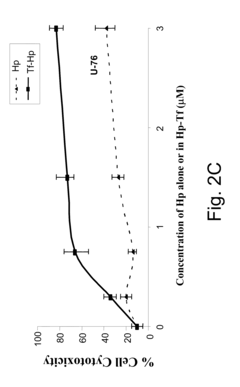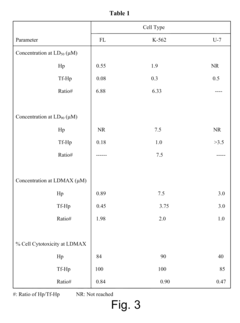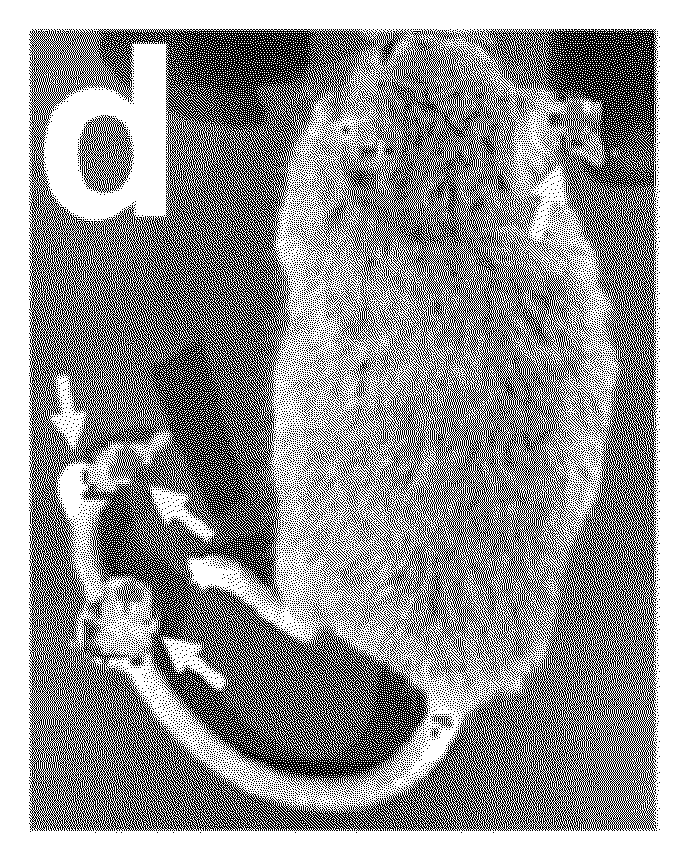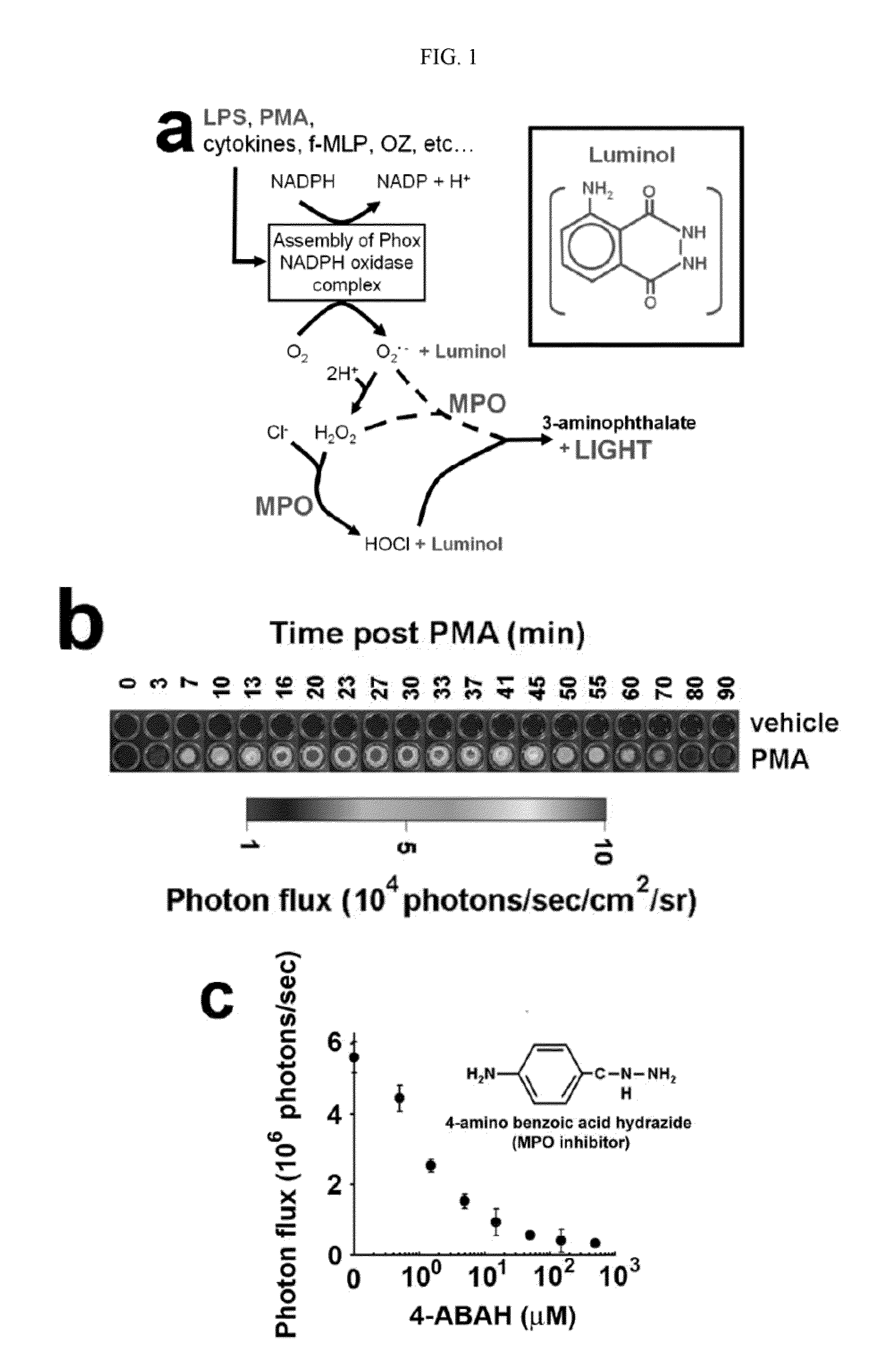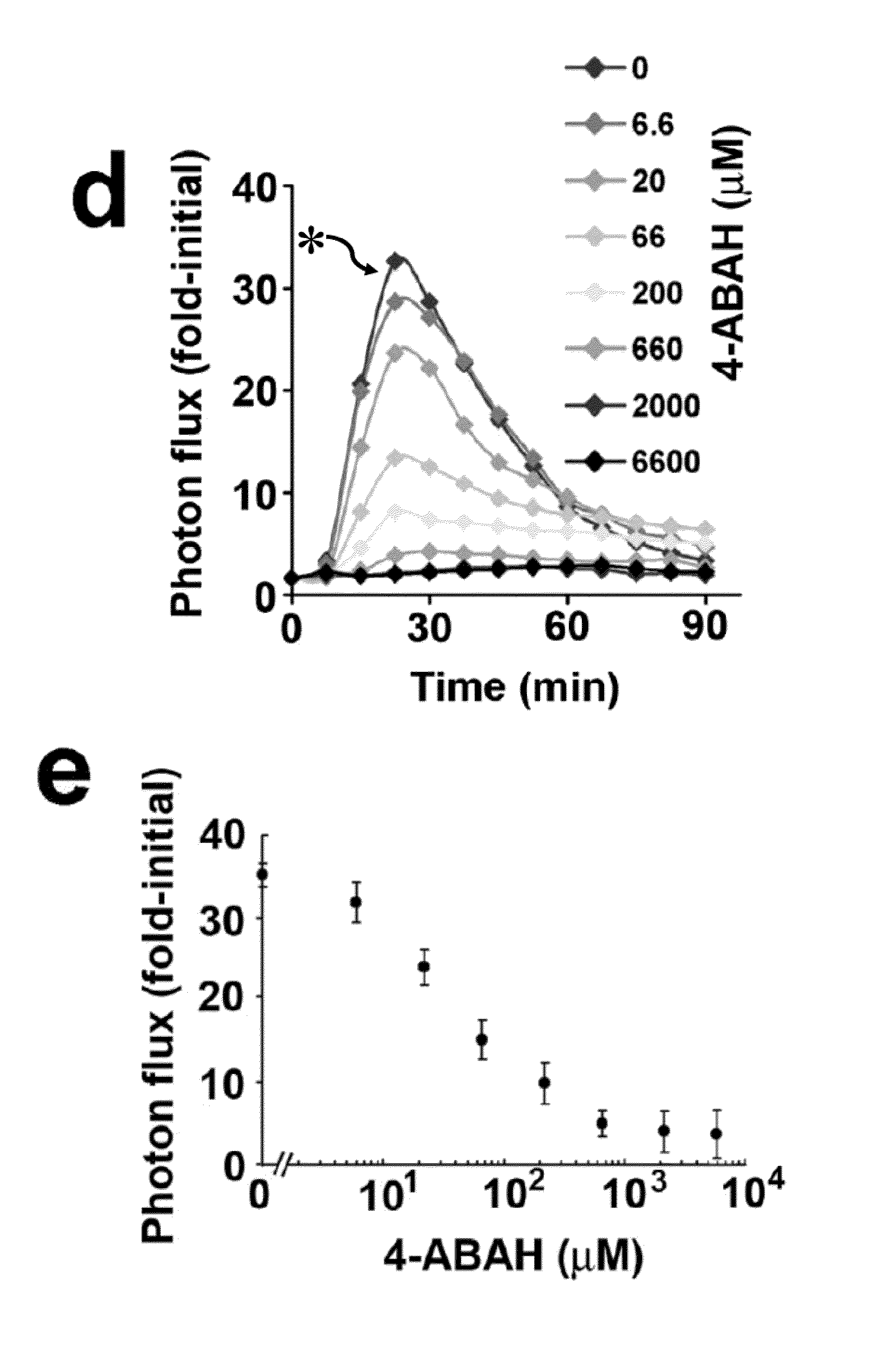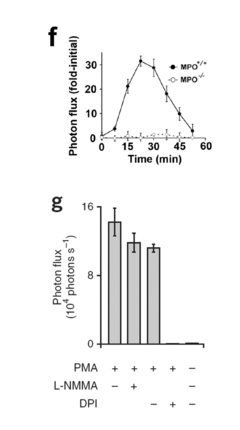How Luminol Fuels Advances in Creative Research Approaches?
AUG 19, 20259 MIN READ
Generate Your Research Report Instantly with AI Agent
Patsnap Eureka helps you evaluate technical feasibility & market potential.
Luminol Research Background and Objectives
Luminol, a chemiluminescent compound, has been a cornerstone in forensic science and biochemical research for decades. Its unique property of emitting light when oxidized has made it an invaluable tool in various scientific disciplines. The history of luminol research dates back to the early 20th century when it was first synthesized by German chemist H. O. Albrecht in 1928. Since then, its applications have expanded far beyond its initial use in chemical demonstrations.
The evolution of luminol research has been marked by significant milestones. In the 1930s, its potential for detecting trace amounts of blood was discovered, revolutionizing forensic investigations. The 1950s and 1960s saw the development of more sensitive and specific luminol-based techniques for blood detection, enhancing its reliability in crime scene analysis. By the 1980s, luminol had found its way into biochemical research, particularly in the study of cellular processes and enzyme kinetics.
The primary objective of current luminol research is to explore and expand its applications in creative and innovative ways. This includes enhancing its sensitivity and specificity in forensic applications, developing new methodologies for its use in biomedical research, and investigating its potential in environmental monitoring and industrial processes. Researchers aim to overcome existing limitations, such as its susceptibility to false positives and the potential destruction of DNA evidence in forensic applications.
Another key goal is to understand the fundamental mechanisms of luminol chemiluminescence at a molecular level. This knowledge could lead to the development of new luminol derivatives with improved properties, such as increased light output, longer emission duration, or specificity to particular substances. Such advancements could open up new avenues for luminol's application in fields as diverse as medical diagnostics, environmental sensing, and even artistic expression.
The interdisciplinary nature of luminol research is driving collaborations between chemists, biologists, forensic scientists, and engineers. This cross-pollination of ideas is expected to fuel creative approaches in utilizing luminol's unique properties. For instance, recent studies have explored the use of luminol in detecting specific metal ions in environmental samples, potentially leading to new methods for water quality monitoring.
As we look to the future, the objectives of luminol research are expanding to include its integration with cutting-edge technologies. This includes combining luminol-based detection systems with artificial intelligence for automated analysis, exploring its use in nanotechnology for targeted sensing applications, and investigating its potential in developing novel imaging techniques for both scientific and medical purposes. The ongoing research aims not only to refine existing applications but also to uncover entirely new uses for this versatile compound, pushing the boundaries of what is possible in scientific investigation and creative problem-solving.
The evolution of luminol research has been marked by significant milestones. In the 1930s, its potential for detecting trace amounts of blood was discovered, revolutionizing forensic investigations. The 1950s and 1960s saw the development of more sensitive and specific luminol-based techniques for blood detection, enhancing its reliability in crime scene analysis. By the 1980s, luminol had found its way into biochemical research, particularly in the study of cellular processes and enzyme kinetics.
The primary objective of current luminol research is to explore and expand its applications in creative and innovative ways. This includes enhancing its sensitivity and specificity in forensic applications, developing new methodologies for its use in biomedical research, and investigating its potential in environmental monitoring and industrial processes. Researchers aim to overcome existing limitations, such as its susceptibility to false positives and the potential destruction of DNA evidence in forensic applications.
Another key goal is to understand the fundamental mechanisms of luminol chemiluminescence at a molecular level. This knowledge could lead to the development of new luminol derivatives with improved properties, such as increased light output, longer emission duration, or specificity to particular substances. Such advancements could open up new avenues for luminol's application in fields as diverse as medical diagnostics, environmental sensing, and even artistic expression.
The interdisciplinary nature of luminol research is driving collaborations between chemists, biologists, forensic scientists, and engineers. This cross-pollination of ideas is expected to fuel creative approaches in utilizing luminol's unique properties. For instance, recent studies have explored the use of luminol in detecting specific metal ions in environmental samples, potentially leading to new methods for water quality monitoring.
As we look to the future, the objectives of luminol research are expanding to include its integration with cutting-edge technologies. This includes combining luminol-based detection systems with artificial intelligence for automated analysis, exploring its use in nanotechnology for targeted sensing applications, and investigating its potential in developing novel imaging techniques for both scientific and medical purposes. The ongoing research aims not only to refine existing applications but also to uncover entirely new uses for this versatile compound, pushing the boundaries of what is possible in scientific investigation and creative problem-solving.
Market Applications of Luminol-Based Technologies
Luminol-based technologies have found diverse applications across various market sectors, leveraging the compound's unique chemiluminescent properties. In forensic science, luminol remains a cornerstone tool for crime scene investigators, enabling the detection of trace amounts of blood even after cleaning attempts. This application has expanded beyond traditional law enforcement to include private investigation firms and specialized cleaning services that verify the thoroughness of biohazard remediation.
The medical field has embraced luminol-based technologies for diagnostic purposes. Researchers have developed highly sensitive assays that utilize luminol's chemiluminescence to detect biomarkers associated with various diseases, including cancer and infectious diseases. These tests offer rapid results with high sensitivity, potentially revolutionizing point-of-care diagnostics in both clinical and field settings.
Environmental monitoring represents another growing market for luminol applications. Water quality testing has benefited from luminol-based sensors that can detect minute concentrations of pollutants, heavy metals, and microbial contamination. These sensors are being integrated into automated monitoring systems for municipal water supplies, industrial effluent management, and ecological research.
In the realm of industrial safety, luminol-derived compounds are being used to develop advanced leak detection systems. These systems can identify microscopic fluid leaks in pipelines, storage tanks, and manufacturing equipment, enhancing safety measures and preventing potential environmental hazards. The aerospace and automotive industries have shown particular interest in these technologies for quality control and maintenance procedures.
The food and beverage industry has also found innovative uses for luminol-based technologies. Quality control processes now incorporate luminol tests to detect contamination and ensure proper sanitation of processing equipment. Additionally, packaging manufacturers are exploring luminol-infused materials that could serve as visual indicators of food spoilage or tampering, enhancing consumer safety and reducing food waste.
Emerging applications in art conservation and authentication leverage luminol's ability to reveal hidden details in paintings and historical artifacts. Museums and art restoration specialists are adopting these techniques to uncover underlying sketches, detect forgeries, and guide restoration efforts with unprecedented precision.
As research continues, the potential for luminol in creative applications expands. Educational markets are developing luminol-based kits for STEM education, allowing students to explore principles of chemistry and forensic science through hands-on experiments. Furthermore, the entertainment industry is exploring luminol's visual effects for stage productions and immersive experiences, creating novel artistic expressions that captivate audiences through the magic of chemiluminescence.
The medical field has embraced luminol-based technologies for diagnostic purposes. Researchers have developed highly sensitive assays that utilize luminol's chemiluminescence to detect biomarkers associated with various diseases, including cancer and infectious diseases. These tests offer rapid results with high sensitivity, potentially revolutionizing point-of-care diagnostics in both clinical and field settings.
Environmental monitoring represents another growing market for luminol applications. Water quality testing has benefited from luminol-based sensors that can detect minute concentrations of pollutants, heavy metals, and microbial contamination. These sensors are being integrated into automated monitoring systems for municipal water supplies, industrial effluent management, and ecological research.
In the realm of industrial safety, luminol-derived compounds are being used to develop advanced leak detection systems. These systems can identify microscopic fluid leaks in pipelines, storage tanks, and manufacturing equipment, enhancing safety measures and preventing potential environmental hazards. The aerospace and automotive industries have shown particular interest in these technologies for quality control and maintenance procedures.
The food and beverage industry has also found innovative uses for luminol-based technologies. Quality control processes now incorporate luminol tests to detect contamination and ensure proper sanitation of processing equipment. Additionally, packaging manufacturers are exploring luminol-infused materials that could serve as visual indicators of food spoilage or tampering, enhancing consumer safety and reducing food waste.
Emerging applications in art conservation and authentication leverage luminol's ability to reveal hidden details in paintings and historical artifacts. Museums and art restoration specialists are adopting these techniques to uncover underlying sketches, detect forgeries, and guide restoration efforts with unprecedented precision.
As research continues, the potential for luminol in creative applications expands. Educational markets are developing luminol-based kits for STEM education, allowing students to explore principles of chemistry and forensic science through hands-on experiments. Furthermore, the entertainment industry is exploring luminol's visual effects for stage productions and immersive experiences, creating novel artistic expressions that captivate audiences through the magic of chemiluminescence.
Current Luminol Research Challenges
Luminol, a chemiluminescent compound widely used in forensic science and biochemistry, faces several challenges in its application for creative research approaches. One of the primary obstacles is the limited sensitivity and specificity of luminol-based detection methods. While luminol is known for its ability to detect trace amounts of blood, it can also produce false positives when reacting with other substances, such as certain plant materials or cleaning agents. This lack of specificity can lead to misinterpretation of results, particularly in complex research environments where multiple variables are present.
Another significant challenge is the relatively short duration of the luminol reaction. The chemiluminescent glow produced by luminol typically lasts only for a few seconds to minutes, which can limit its usefulness in certain research applications that require prolonged observation or analysis. This temporal constraint poses difficulties for researchers attempting to capture detailed data or conduct time-sensitive experiments using luminol-based techniques.
The stability of luminol solutions presents an additional hurdle for researchers. Luminol tends to degrade over time, especially when exposed to light or heat, which can affect the reliability and reproducibility of experiments. This instability necessitates careful storage and handling procedures, as well as frequent preparation of fresh solutions, which can be time-consuming and resource-intensive for research teams.
Furthermore, the optimization of luminol formulations for specific research applications remains a challenge. Different research contexts may require varying levels of sensitivity, reaction kinetics, or compatibility with other reagents. Developing tailored luminol-based systems that can meet these diverse requirements while maintaining consistent performance across different experimental conditions is an ongoing area of investigation.
The quantification of luminol-based signals also presents difficulties in certain research scenarios. While luminol can provide qualitative information about the presence of certain substances, achieving accurate and reliable quantitative measurements can be complex. Factors such as background noise, interfering compounds, and variations in reaction conditions can all impact the precision of quantitative analyses using luminol.
Lastly, the integration of luminol-based detection methods with other analytical techniques and emerging technologies poses both opportunities and challenges. Researchers are exploring ways to combine luminol chemiluminescence with advanced imaging systems, microfluidic devices, and nanotechnology platforms to enhance its capabilities and expand its applications. However, these integrations often require overcoming technical hurdles related to compatibility, sensitivity, and data interpretation.
Another significant challenge is the relatively short duration of the luminol reaction. The chemiluminescent glow produced by luminol typically lasts only for a few seconds to minutes, which can limit its usefulness in certain research applications that require prolonged observation or analysis. This temporal constraint poses difficulties for researchers attempting to capture detailed data or conduct time-sensitive experiments using luminol-based techniques.
The stability of luminol solutions presents an additional hurdle for researchers. Luminol tends to degrade over time, especially when exposed to light or heat, which can affect the reliability and reproducibility of experiments. This instability necessitates careful storage and handling procedures, as well as frequent preparation of fresh solutions, which can be time-consuming and resource-intensive for research teams.
Furthermore, the optimization of luminol formulations for specific research applications remains a challenge. Different research contexts may require varying levels of sensitivity, reaction kinetics, or compatibility with other reagents. Developing tailored luminol-based systems that can meet these diverse requirements while maintaining consistent performance across different experimental conditions is an ongoing area of investigation.
The quantification of luminol-based signals also presents difficulties in certain research scenarios. While luminol can provide qualitative information about the presence of certain substances, achieving accurate and reliable quantitative measurements can be complex. Factors such as background noise, interfering compounds, and variations in reaction conditions can all impact the precision of quantitative analyses using luminol.
Lastly, the integration of luminol-based detection methods with other analytical techniques and emerging technologies poses both opportunities and challenges. Researchers are exploring ways to combine luminol chemiluminescence with advanced imaging systems, microfluidic devices, and nanotechnology platforms to enhance its capabilities and expand its applications. However, these integrations often require overcoming technical hurdles related to compatibility, sensitivity, and data interpretation.
Existing Luminol Research Methodologies
01 Novel luminol detection methods
Research approaches focus on developing new methods for luminol detection, including improved sensitivity and specificity. These methods may involve innovative chemical reactions, advanced imaging techniques, or novel substrate materials to enhance the luminol chemiluminescence reaction for various applications such as forensic analysis and medical diagnostics.- Novel detection methods using luminol: Research approaches focus on developing new detection methods utilizing luminol's chemiluminescent properties. These methods aim to enhance sensitivity and specificity in various applications, such as forensic science, environmental monitoring, and medical diagnostics. Innovations include improved formulations, detection systems, and analysis techniques to maximize luminol's effectiveness in identifying trace amounts of target substances.
- Creative applications of luminol in imaging and visualization: Researchers are exploring innovative ways to use luminol for imaging and visualization purposes. This includes developing new techniques for capturing and processing luminol-based images, as well as integrating luminol reactions with advanced imaging technologies. These approaches aim to enhance the visual representation of luminol reactions for various scientific and industrial applications.
- Integration of luminol in automated systems and AI: Creative research approaches involve incorporating luminol-based detection methods into automated systems and artificial intelligence platforms. This integration aims to enhance the efficiency and accuracy of luminol-based analyses by leveraging machine learning algorithms and robotics. Such approaches can lead to more sophisticated and reliable detection systems in various fields.
- Luminol-based biosensors and environmental monitoring: Innovative research focuses on developing luminol-based biosensors and environmental monitoring tools. These approaches aim to create highly sensitive and specific detection systems for various biological and environmental analytes. The research includes designing novel sensor architectures, improving signal amplification techniques, and exploring new applications in fields such as water quality monitoring and pollution detection.
- Luminol in creative problem-solving and innovation processes: Research approaches explore the use of luminol as a metaphor or tool in creative problem-solving and innovation processes. This includes developing methodologies that apply luminol's properties and reactions as analogies for ideation, brainstorming, and concept development in various fields. Such approaches aim to stimulate innovative thinking and foster interdisciplinary collaborations in research and development.
02 Luminol-based creative problem-solving techniques
This approach involves using luminol as a metaphor or tool in creative problem-solving methodologies. It may include brainstorming techniques, idea generation processes, or innovative thinking frameworks inspired by the properties and applications of luminol, particularly its ability to reveal hidden information.Expand Specific Solutions03 Integration of luminol in digital technologies
Research approaches explore the integration of luminol principles or applications with digital technologies. This may include developing software algorithms, image processing techniques, or data analysis methods inspired by luminol's chemiluminescent properties for use in various fields such as forensic science, environmental monitoring, or medical imaging.Expand Specific Solutions04 Luminol-inspired educational and training methods
These approaches focus on developing educational tools, training programs, or interactive learning experiences based on luminol principles. They may include virtual simulations, hands-on experiments, or curriculum designs that use luminol as a central theme to teach concepts in chemistry, forensic science, or creative thinking.Expand Specific Solutions05 Luminol applications in business innovation
Research approaches that apply luminol concepts to business innovation and strategy. This may include developing new business models, product ideation techniques, or market analysis methods inspired by luminol's ability to reveal hidden information or its transformative properties.Expand Specific Solutions
Key Players in Luminol Research
The luminol research landscape is characterized by a diverse and competitive field, with players ranging from academic institutions to major corporations. The market is in a growth phase, driven by increasing applications in forensic science, biomedical research, and creative industries. While the technology is relatively mature, ongoing research focuses on enhancing sensitivity and expanding applications. Key players include universities like Washington State University and Fudan University, alongside corporate entities such as Amyris, Inc. and Shell Oil Co. These organizations are actively pursuing innovations in luminol chemistry, aiming to improve its efficacy and explore novel uses across various sectors.
Universiteit Utrecht Holding BV
Technical Solution: Universiteit Utrecht Holding BV has developed innovative approaches using luminol in creative research. Their method involves enhancing the chemiluminescent properties of luminol to create more sensitive and specific detection systems for various applications. The university's researchers have optimized the luminol reaction conditions, including pH, catalyst concentration, and oxidizing agents, to achieve longer-lasting and brighter luminescence[1]. This improved luminol system has been applied in forensic science for blood detection, environmental monitoring for trace metal analysis, and biomedical research for enzyme activity assays[3]. The enhanced luminol formulation allows for detection of smaller quantities of target substances and provides a more stable signal over time, enabling more accurate and reliable measurements in diverse research fields[5].
Strengths: Improved sensitivity and specificity in detection systems. Versatile applications across multiple research domains. Enhanced stability and duration of luminescent signal. Weaknesses: May require specialized equipment for optimal results. Potential interference from other substances in complex samples.
University of Leiden
Technical Solution: The University of Leiden has pioneered the use of luminol in creative research approaches, particularly in the field of molecular biology and biochemistry. Their innovative technique involves coupling luminol-based chemiluminescence with advanced imaging technologies to visualize cellular processes in real-time. Researchers have developed a method to conjugate luminol derivatives with specific biomolecules, allowing for targeted detection of cellular components and metabolic activities[2]. This approach has been successfully applied to study protein-protein interactions, enzyme kinetics, and signal transduction pathways with high spatial and temporal resolution[4]. The University of Leiden's luminol-based imaging system has also been adapted for high-throughput screening applications, enabling rapid assessment of drug candidates and their effects on cellular functions[6].
Strengths: High-resolution imaging of cellular processes. Real-time monitoring of biomolecular interactions. Adaptable for high-throughput screening. Weaknesses: Potential phototoxicity to living cells during prolonged imaging. Requires specialized imaging equipment and expertise.
Innovative Luminol Research Techniques
Photodynamic therapy using chemiluminescence and a ligand-photosensitiser conjugate
PatentInactiveUS20100297762A1
Innovation
- A method involving a ligand-toxin conjugate (LTC) comprising a photosensitizer like hematoporphyrin conjugated with transferrin, combined with a chemiluminescent agent such as luminol, which activates the photosensitizer intracellularly to produce reactive oxygen species, thereby enhancing target cell destruction without requiring external light.
Bioluminescence imaging of myeloperoxidase activity in vivo, methods, compositions and apparatuses therefor
PatentInactiveUS20110250145A1
Innovation
- The development of methods for non-invasive imaging of MPO activity using luminogenic-optical probes that emit light upon contact with oxidizing agents, allowing for the visualization of MPO activity in vivo, particularly through bioluminescence imaging (BLI) techniques.
Interdisciplinary Applications of Luminol
Luminol, a versatile chemical compound, has found applications across various scientific disciplines, showcasing its potential to drive innovative research approaches. In forensic science, luminol's chemiluminescent properties have revolutionized crime scene investigations, enabling the detection of trace amounts of blood even after thorough cleaning attempts. This application has significantly enhanced the ability to solve cold cases and provide crucial evidence in criminal investigations.
Beyond forensics, luminol has made substantial contributions to biomedical research. Its high sensitivity in detecting hemoglobin and other iron-containing proteins has led to the development of novel diagnostic tools for various medical conditions. For instance, researchers have utilized luminol-based assays to detect early-stage cancer markers and monitor the progression of neurodegenerative diseases, offering potential breakthroughs in early diagnosis and treatment monitoring.
In environmental science, luminol has proven invaluable for detecting and quantifying pollutants in water systems. Its ability to react with certain heavy metals and organic compounds has enabled scientists to develop rapid and cost-effective methods for environmental monitoring. This application has far-reaching implications for water quality assessment and the protection of aquatic ecosystems.
The field of nanotechnology has also benefited from luminol's unique properties. Researchers have incorporated luminol into nanoparticles and biosensors, creating highly sensitive detection systems for a wide range of analytes. These advancements have potential applications in fields such as food safety, drug discovery, and point-of-care diagnostics.
In the realm of materials science, luminol has inspired the development of novel light-emitting materials. By studying the mechanisms behind luminol's chemiluminescence, scientists have engineered new compounds with enhanced luminescent properties, opening up possibilities for improved lighting technologies and display systems.
The interdisciplinary nature of luminol research has fostered collaboration between experts from diverse fields, leading to unexpected synergies and innovations. For example, the combination of luminol chemistry with microfluidics has resulted in the creation of miniaturized analytical devices capable of performing complex chemical analyses with minimal sample volumes. This convergence of technologies has implications for portable diagnostic tools and on-site environmental monitoring.
As luminol continues to fuel advances in creative research approaches, its applications are likely to expand further, potentially revolutionizing fields such as agriculture, energy production, and space exploration. The compound's versatility and the ongoing efforts to understand and exploit its properties underscore its significance as a catalyst for scientific innovation across multiple disciplines.
Beyond forensics, luminol has made substantial contributions to biomedical research. Its high sensitivity in detecting hemoglobin and other iron-containing proteins has led to the development of novel diagnostic tools for various medical conditions. For instance, researchers have utilized luminol-based assays to detect early-stage cancer markers and monitor the progression of neurodegenerative diseases, offering potential breakthroughs in early diagnosis and treatment monitoring.
In environmental science, luminol has proven invaluable for detecting and quantifying pollutants in water systems. Its ability to react with certain heavy metals and organic compounds has enabled scientists to develop rapid and cost-effective methods for environmental monitoring. This application has far-reaching implications for water quality assessment and the protection of aquatic ecosystems.
The field of nanotechnology has also benefited from luminol's unique properties. Researchers have incorporated luminol into nanoparticles and biosensors, creating highly sensitive detection systems for a wide range of analytes. These advancements have potential applications in fields such as food safety, drug discovery, and point-of-care diagnostics.
In the realm of materials science, luminol has inspired the development of novel light-emitting materials. By studying the mechanisms behind luminol's chemiluminescence, scientists have engineered new compounds with enhanced luminescent properties, opening up possibilities for improved lighting technologies and display systems.
The interdisciplinary nature of luminol research has fostered collaboration between experts from diverse fields, leading to unexpected synergies and innovations. For example, the combination of luminol chemistry with microfluidics has resulted in the creation of miniaturized analytical devices capable of performing complex chemical analyses with minimal sample volumes. This convergence of technologies has implications for portable diagnostic tools and on-site environmental monitoring.
As luminol continues to fuel advances in creative research approaches, its applications are likely to expand further, potentially revolutionizing fields such as agriculture, energy production, and space exploration. The compound's versatility and the ongoing efforts to understand and exploit its properties underscore its significance as a catalyst for scientific innovation across multiple disciplines.
Ethical Considerations in Luminol Research
The use of luminol in creative research approaches raises several ethical considerations that must be carefully addressed. One primary concern is the potential misuse of luminol in forensic investigations, which could lead to false accusations or wrongful convictions. Researchers must ensure that their creative applications of luminol do not compromise the integrity of forensic science or undermine public trust in the criminal justice system.
Another ethical consideration is the environmental impact of luminol usage. While luminol is generally considered non-toxic, its widespread application in creative research could potentially lead to unforeseen ecological consequences. Researchers should prioritize developing eco-friendly alternatives or minimizing the environmental footprint of luminol-based experiments.
Privacy and consent issues also come into play when using luminol in creative research. For instance, if luminol is used to detect traces of biological materials in public spaces or private property, it may inadvertently reveal sensitive information about individuals without their knowledge or consent. Researchers must establish clear guidelines and obtain necessary permissions to protect individual privacy rights.
The ethical use of luminol in research involving human subjects is another critical consideration. Experiments that involve applying luminol to human tissues or bodily fluids must adhere to strict ethical guidelines and obtain informed consent from participants. Researchers should also be mindful of potential psychological impacts on subjects who may be exposed to luminol-enhanced imagery of their own biological traces.
Furthermore, the responsible communication of luminol-based research findings is essential. Researchers must be cautious about how they present their results to avoid sensationalism or misinterpretation, particularly when dealing with topics that may be sensitive or controversial. Clear and accurate reporting of luminol-related research is crucial to maintain scientific integrity and public trust.
Lastly, there is an ethical obligation to consider the long-term implications of advancing luminol technology. As creative research approaches push the boundaries of luminol's capabilities, researchers must anticipate and address potential future misuses or unintended consequences of their innovations. This includes considering how advancements in luminol technology might impact privacy, security, and social dynamics in the future.
Another ethical consideration is the environmental impact of luminol usage. While luminol is generally considered non-toxic, its widespread application in creative research could potentially lead to unforeseen ecological consequences. Researchers should prioritize developing eco-friendly alternatives or minimizing the environmental footprint of luminol-based experiments.
Privacy and consent issues also come into play when using luminol in creative research. For instance, if luminol is used to detect traces of biological materials in public spaces or private property, it may inadvertently reveal sensitive information about individuals without their knowledge or consent. Researchers must establish clear guidelines and obtain necessary permissions to protect individual privacy rights.
The ethical use of luminol in research involving human subjects is another critical consideration. Experiments that involve applying luminol to human tissues or bodily fluids must adhere to strict ethical guidelines and obtain informed consent from participants. Researchers should also be mindful of potential psychological impacts on subjects who may be exposed to luminol-enhanced imagery of their own biological traces.
Furthermore, the responsible communication of luminol-based research findings is essential. Researchers must be cautious about how they present their results to avoid sensationalism or misinterpretation, particularly when dealing with topics that may be sensitive or controversial. Clear and accurate reporting of luminol-related research is crucial to maintain scientific integrity and public trust.
Lastly, there is an ethical obligation to consider the long-term implications of advancing luminol technology. As creative research approaches push the boundaries of luminol's capabilities, researchers must anticipate and address potential future misuses or unintended consequences of their innovations. This includes considering how advancements in luminol technology might impact privacy, security, and social dynamics in the future.
Unlock deeper insights with Patsnap Eureka Quick Research — get a full tech report to explore trends and direct your research. Try now!
Generate Your Research Report Instantly with AI Agent
Supercharge your innovation with Patsnap Eureka AI Agent Platform!
